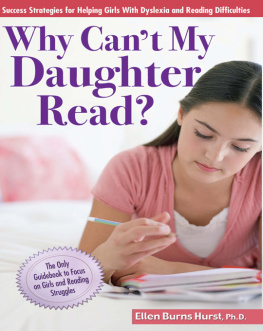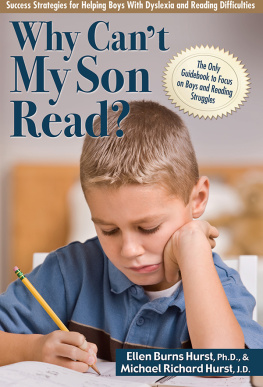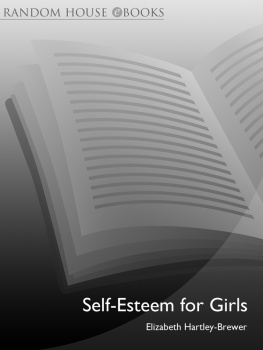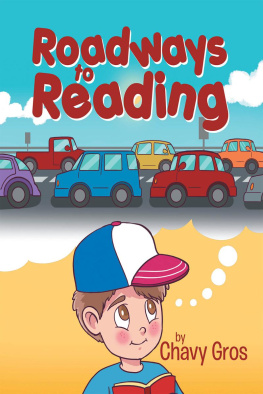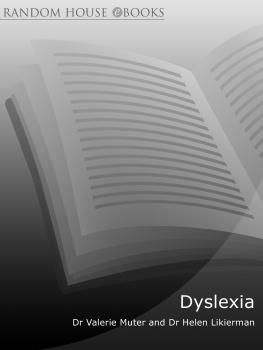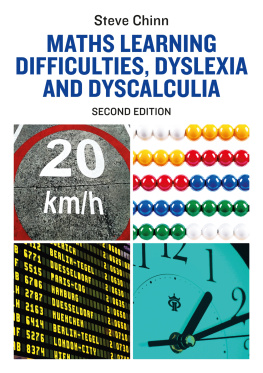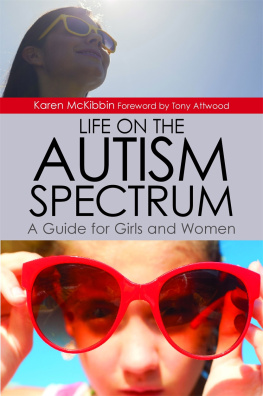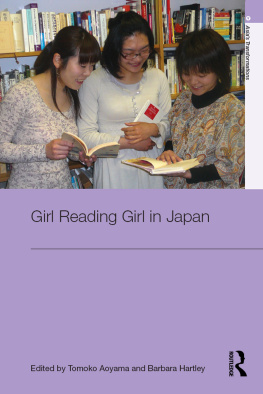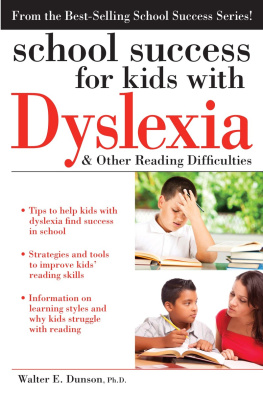
Acknowledgments
I would like to acknowledge the courage of the four women who shared their struggles with dyslexia. It is my hope that the telling of their struggles will inform the parents of today and tomorrow about the challenges facing their daughters with dyslexia.
To Dr. Mary Ariail, I owe my understanding of identities and the research process. I extend special gratitude to the women who each guided my work from their specialty areas. Dr. Amy Flint, Dr. Patricia Carter, and Dr. Dana Fox have placed their unique marks on my identity as an author. With their support, my journey was rich and meaningful, and this work more robust.
Many thanks and appreciation is also given to my children. Zac Hurst, Michelle Quick Hurst, Liz Hurst, and Brent Ruth have provided constant love and encouragement to this venture. My oldest son, Dr. Eric Hurst, has provided unique support as my mentor. To have a child as a mentor is a unique and wonderful experience. Finally, to my husband, Michael, I give thanks for his love, legal expertise, and willingness to support my work.

About the Author
Dr. Ellen Burns Hurst holds a Ph.D. in language and literacy and has spent a career focused on cutting-edge reading interventions in her clinical practice. A true pioneer in the field of dyslexia, Dr. Hurst continues to focus on her passion of changing the reading lives of students through her position as past-president of the International Dyslexia Association of Georgia, as an adjunct professor at Georgia State University, and through frequent research presentations at national and international literacy conferences.
Her research interests include a focus on the struggling reader in global school settings, as well as the social, cultural, and cognitive aspects of learning to read in the local classroom. As an experienced reading specialist in public schools, private school, and private practice, she has a theoretical and pragmatic interest in reading assessment and intervention. Her most current university teaching assignments at Georgia State University focus on assessment in the early childhood classroom for undergraduates, as well as literacy assessment and linguistic components of literacy at the graduate level.
Dr. Hurst is married to Michael Hurst, J.D., an attorney in private practice. They live in Atlanta, GA, where they share their passion for advocacy work for underachieving children.
CHAPTER 1

Why My Daughter?
Once upon a time, there lived a beautiful prom queen. This prom queen possessed all of the requisite physical characteristics that one might expect in a fantasy queen. She had golden tresses, blue eyes, porcelain skin, and a perfect white smile. She gave the illusion of developed sexuality without denying the possibility of innocence. She was a combination of loner and outsider. She had the genius of communication. She could be characterized as a cultural heroine in that she unified the individual and the group. However, our prom queen differs significantly in one aspect of her lifeshe lived with a secret that she kept hidden throughout her school years. This young woman walked into my office and set this book into motion. This vision of perfection had one veiled flaw. She could not read.
As much as 15%20% of the population demonstrates a significant reading disability (National Institute of Child Health and Human Development [NICHD], 2000). This means that 4 or 5 children in the average classroom will have some form of reading disability. The symptoms of this disability may include slow or inaccurate reading, poor spelling, poor writing, or difficulty with comprehension. Whether these individuals qualify for special educational services is uncertain, but what is certain is that they are likely to struggle with many aspects of the learning process.
The fundamental and powerful assumptions of our culture regarding literacy are that it is inherently good for the individual, good for the culture, difficult to acquire, and should be transmitted in classrooms. If literacy is difficult to acquire, then it becomes necessary to create a multitude of reasons to explain why some read better than others, as well as the cultural imperative to label as inferior those individuals who have poor reading skills. The consequence of believing that literacy is best learned in classrooms enables schools to create a monopoly in which they blindly repeat the same failed instructional practices with the expectation of a different outcome.
A history of learning disabilities (LD) in the United States reveals much about the cultural roles of literacy. After decades of neurological speculation regarding the exact nature of dyslexia, critics of the diagnosis of dyslexia still assert that it is nothing more than a plausible explanation of why children of privilege and intelligence do not learn to read as expected or a means of securing more time for labeled children on high stakes examinations (Elliott & Gibbs, 2008). However, the breakthrough of neuroimaging in children with dyslexia has revealed scientific evidence that individuals with dyslexia have a reduced engagement of the left temporo-parietal cortex for phonological processing of print (Shaywitz, 2003). This same neuroimaging technique confirms the plasticity of the brain as it responds to effective intervention. Behavioral and brain measures identify infants and young children at risk for dyslexia. Subsequent procedures demonstrate that preventive intervention is often effective and document the plasticity of the brain. There is hope that a combination of targeted teaching practices and cognitive neuroscience measures could prevent dyslexia from occurring in the majority of children who would otherwise develop dyslexia. To fully explore this phenomenon, it is necessary to understand the complexity of dyslexia.
The difficulties and concerns of a parent advocating for the child with reading disabilities are already significant. The confusion and misconceptions surrounding the diagnosis and treatment of dyslexia only add to the parental dilemma. Unfortunately, there are charlatans who will take emotional and financial advantage of the desperate parents of the reading disabled. Providers of costly vision therapy require parents to commit to 6090 hours of left-to-right tracking exercises at $90$120 an hour. Trendy movement therapy promises improved balance in the body and the brain. The neighborhood chiropractor is more than willing to lead the dyslexic child through a series of exercises promised to improve reading performance. Strip mall learning centers often charge high rates for computer-based instruction that is monitored by rotating tutors with questionable credentials. The well-meaning but misinformed reading specialist assures the parents that their childs reading will improve if only they use multicolored overlays on the childs reading materials.
The correction of this very serious disability is not so simple. In order to seriously address the identification and remediation of dyslexic children, and protect the parents of these children from unnecessary expenditure of time and money, the myths and misconceptions surrounding dyslexia must be addressed. As we work to deconstruct the masculinized educational framework in an attempt to make the system more equitable, often forgotten are the compliant girls who are experiencing academic difficulty. The gender normative behavior of boys demands most of the attention of teachers and administrators. As a reading specialist working primarily with diagnosed dyslexics, I am acutely aware that the immediate and long-term impact of dyslexia upon the lives of girls is only now beginning to be considered.
Next page
